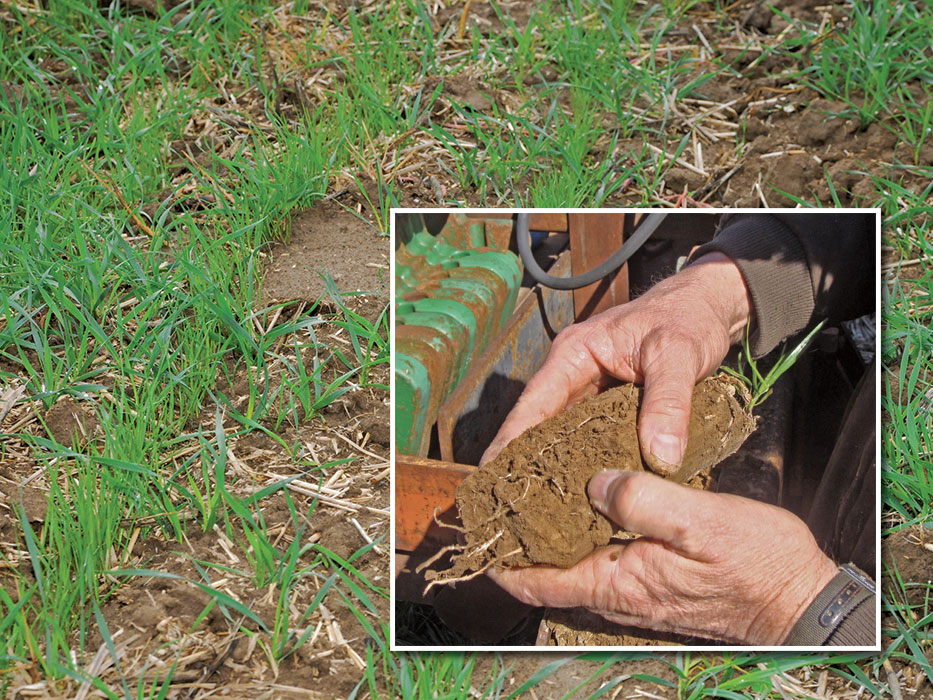Note: this is the first in a series of blog posts summarizing the growth of sustainable agriculture in the U.S. Specifically, this series will look at the role of cover crops and how Oregon seed growers played a crucial role in introducing cover crops to Midwest farms.
“Ah-Ha” is Shorthand for Innovation
Don Wirth is accustomed to “ah-ha moments” in his life. So, the Oregon grass seed farmer and co-owner of Saddle Butte Ag Inc. wasn’t surprised when the lightbulb went on in his head at the annual Farm Machinery Show in the mid 1990s. He was there representing Oregon grass seed growers, specifically those who grow tall fescue.
“Three farmers from Ohio approached me and asked me what I knew about annual ryegrass. I knew enough to ask them what they knew first,” Don laughed. “Well, they told me they had been rotating annual ryegrass into their corn acreage and using it for grazing and sileage, and that they were getting up to seven tons of ryegrass silage sileage per acre with it.” None of that surprised him, although plenty of questions popped up for him, like what time of year they planted and how they got rid of the ryegrass before planting corn again. They said they drill the ryegrass into corn stubble and then no till corn into the ryegrass stubble.
When the guys claimed that their corn production had improved in the acres planted with annual ryegrass, Don’s “ah-ha” was the stimulus for what has been a quarter-century of growth in cover cropping and “sustainable agriculture”.
He came back to Oregon that February and shared his news with Nick Bowers, co-owner of another Willamette Valley seed farm and Bryan Ostlund about putting some plots on dairy farms in the Midwest. The Commission funded the project and plots were established the next year.
At the time, annual ryegrass was a high-volume, low-priced seed used primarily in warmer climates, sprayed liberally on ball fields, parks and highway rights-of-way. The idea that this lowly species might find a niche market, at a higher price, in the corn belt was attractive. At that time, in the mid-1990s, a few innovators had already been expressing delight with the benefits of no-tilling. But cover cropping was almost unheard of.
Fast forward for a moment to 2020. No-tilling and cover crops are household terms in farm country. The reduction of what was called “conventional” tillage is stunning, as farmers adopt management practices that rebuild the soil instead of continually ripping it up every year and seeing much of it wash or blow away during the year’s weather cycles.

The acres committed to no-tilling has risen from about 3 million acres in the mid-1970s (the era that ushered in Earth Day, and the far-reaching Clean Air and Clean Water legislation) to more than 100 million acres. The growth chart suggests that the practice is continuing to climb steeply, as more growers come to understand the benefits, and the savings, available with new management practices.
When Don, Nick and the Commission jumped into promoting annual ryegrass and cover crops, it’s safe to say there were only a handful of highly innovative farms testing cover crops with no-till, which basically amounts to planting a cover crop in the field after corn has been harvested.
Today, the number of acres planted in cover crops is somewhere between 15 and 16 million acres. But, like no-tilling, the rate of adoption is remarkable. For example, in just five years (2012 – 2017) the number of cover crop acres increased by almost 50 percent! And the number of farms using cover crops also increased by 15 percent in that same time.
In the Annual Report 2019 – 2020 Cover Crop Survey published by SARE and the Conservation Tillage Information Center (CTIC), the following paragraph describes what has become an “ah ha” for the agriculture industry.
Growers clearly appreciate the contributions they attribute to cover crops: healthier soils, lower herbicide and fertilizer costs, reduced erosion, and improved weed control. In fact, they appreciate the benefits enough to invest substantially in cover crop seed, and about one in three cover crop users pays for application as well. More than half of the horticulture respondents reported that cover crops increased their profitability.
In the next blog post, you’ll learn more about how the Oregon growers became instrumental in the Midwest adoption of cover crops, through a combination of inspiration, perspiration and innovation and cooperation with Midwest growers, universities and nonprofits.
In the meantime, make note of this FREE educational opportunity, the Fall 2020 national Cover Crop Summit (nov 17 – 18). One of the sponsors is KB Seed Solutions, co-owned by Nick Bowers, one of the Oregon cover crop innovators you’ll learn more about in the next chapter.

